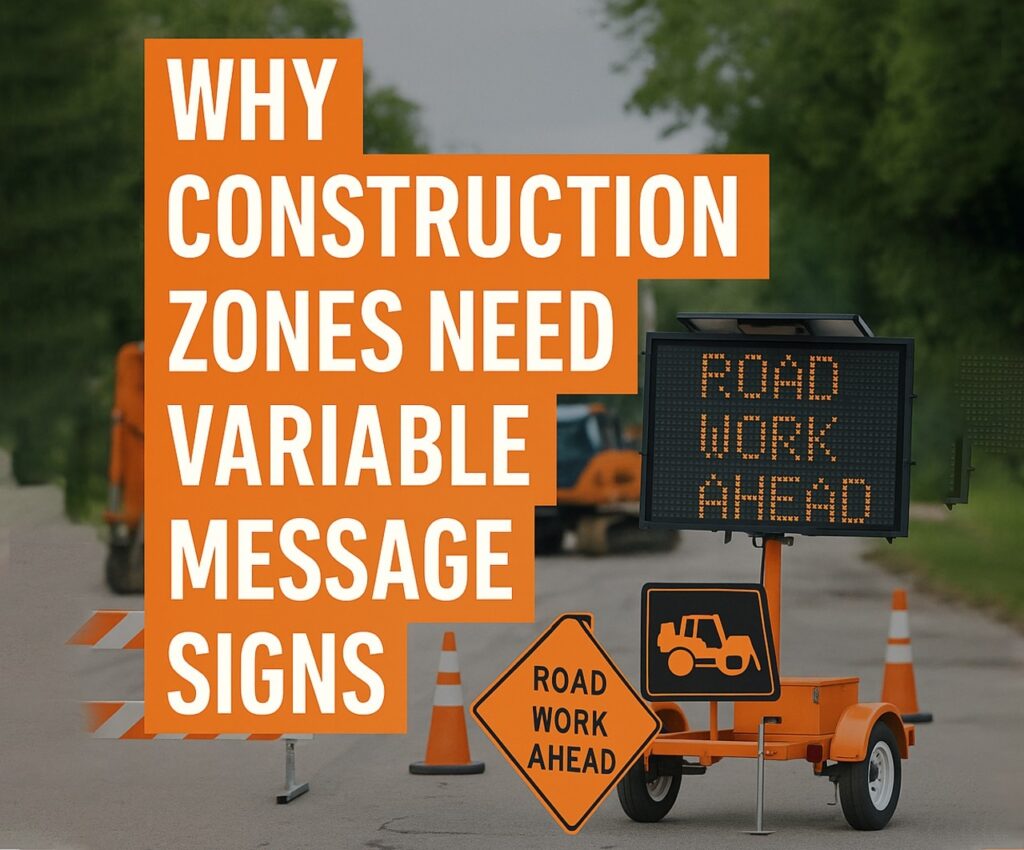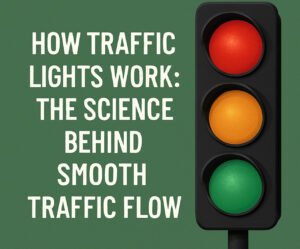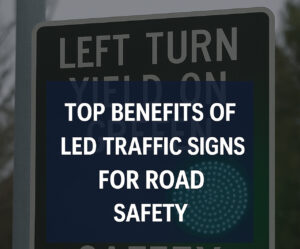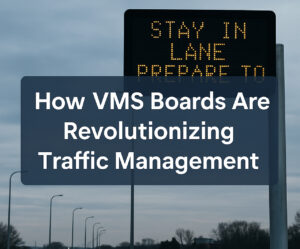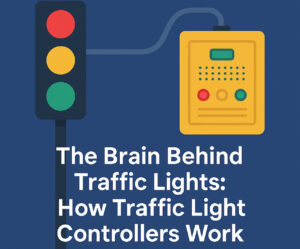Drive past any construction site on a highway and you’re bound to see message signs, dynamic message signs, or more specifically, variable message signs traffic systems in action. These digital displays have become a staple in modern work zones, keeping drivers informed and workers safe. But why are these signs so critical, and what role do they really play in construction zone safety and efficiency? Let’s break it down. Know more..
The Role of Variable Message Signs in Construction Zones
At their core, variable message signs traffic systems are all about communication. These signs can be updated in real-time to relay changing road conditions, lane closures, detours, speed limits, and even emergency alerts. Unlike traditional static message signs, they adapt to the environment and driver needs on the fly.
Dynamic message signs go a step further by using sensors, traffic data, and centralized control systems to deliver the most accurate and up-to-date information possible. This ensures that every motorist passing through a construction zone knows exactly what to expect.
Reducing Confusion and Increasing Compliance
Construction zones are inherently chaotic. Lanes shift, exits change, and speed limits vary depending on the stage of the project. This confusion can lead to driver errors, which are dangerous in areas where workers are close to fast-moving traffic.
Clear and timely communication from variable message signs traffic systems helps eliminate guesswork. When drivers see accurate instructions from dynamic message signs, they’re more likely to comply with changes. This includes reducing speed, changing lanes early, or preparing to merge.
In contrast, outdated or poorly placed message signs often contribute to hesitation and last-minute maneuvers—a recipe for collisions.
Real-Time Information Saves Lives
Imagine a sudden traffic jam forming just ahead of a construction zone. Without any warning, drivers may not have time to slow down or stop, leading to rear-end collisions. But with dynamic message signs linked to traffic sensors, warnings can be displayed instantly, giving drivers crucial seconds to react.
This is especially important for nighttime work or during poor weather when visibility is reduced. Variable message signs traffic systems can adjust brightness and contrast to remain visible at all times, improving safety in all conditions.
Enhancing Worker Safety
The number one goal of any construction project should be zero injuries—especially when it comes to the crew working just feet away from moving traffic. One of the biggest threats they face is inattentive or confused drivers.
By keeping drivers alert and informed, message signs reduce abrupt braking, swerving, and other unpredictable behavior. Workers are safer when drivers are less stressed and more informed. In some regions, dynamic message signs are even used to display reminders like “Slow Down — Workers Ahead” or “Fines Doubled in Work Zones.”
Adaptability to Changing Conditions
Construction projects rarely go exactly as planned. Weather delays, equipment issues, or sudden changes in the scope of work can alter traffic patterns at a moment’s notice.
With variable message signs traffic technology, teams can adjust messages immediately. Whether it’s changing the detour route or updating the timeline for lane closures, having dynamic message signs on hand allows for rapid, flexible communication.
Compare this to static message signs, which need to be physically replaced or reprinted—a process that wastes both time and resources.
Better Traffic Flow and Reduced Congestion
Construction zones often cause bottlenecks, but effective use of message signs can ease the pain. By informing drivers well in advance of changes, these signs give people time to adjust, change routes, or spread out, reducing stop-and-go traffic.
Dynamic message signs can even be programmed to work in tandem with GPS and traffic apps, helping to redirect traffic or suggest alternate routes. This keeps highways moving and prevents localized congestion from turning into widespread gridlock.
Cost-Effective Safety Investment
While variable message signs traffic systems may seem expensive upfront, they pay off quickly. Reduced accidents, fewer delays, and smoother traffic mean lower overall project costs. There’s also a lower likelihood of damage to construction equipment and fewer work stoppages due to road incidents.
Plus, many message signs are reusable and can be moved from site to site, maximizing their value. For larger contractors or municipalities, investing in a fleet of dynamic message signs is a smart, scalable decision.
Integration with Smart Construction Practices
As infrastructure gets smarter, so should our signage. Dynamic message signs are part of the broader move toward intelligent construction sites. Integrated with IoT sensors, weather stations, and remote monitoring systems, these signs can act almost autonomously—responding instantly to changes in the environment.
This makes variable message signs traffic systems not just tools for communication, but vital components of a data-driven safety and logistics network.
Public Trust and Perception
How the public views a construction project can affect everything from political support to funding for future infrastructure. When people see that safety is being prioritized through clear and effective message signs, they tend to have more patience and understanding.
On the other hand, disorganized or misleading signage can frustrate drivers and lead to negative perceptions of the project. Dynamic message signs improve transparency and help manage public expectations.
Best Practices for Using Message Signs in Construction Zones
To get the most out of variable message signs traffic systems, it’s essential to follow a few best practices:
- Plan Ahead: Decide what messages will be needed for each project phase.
- Keep It Clear: Use simple, direct language that drivers can read quickly.
- Update Frequently: Don’t let outdated messages linger—they confuse more than they help.
- Position Strategically: Place message signs far enough ahead to give drivers time to react.
- Monitor Performance: Use traffic data to assess how effective your dynamic message signs are, and adjust accordingly.
Final Thoughts
Construction zones are high-risk areas for both workers and drivers. The need for fast, clear, and adaptable communication has never been more urgent. Message signs, particularly dynamic message signs, are the frontline tools that make this communication possible.
From real-time updates to automated alerts, variable message signs traffic systems are more than just electronic billboards—they’re life-saving devices that keep traffic flowing and people safe. As cities grow and infrastructure projects become more complex, the importance of these smart, flexible tools will only increase.

